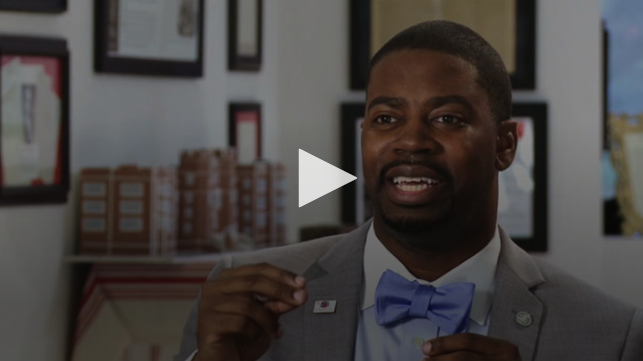I had never heard of the “achievement gap” until the summer after my first year of teaching. It was after reading Teaching Reading to Black Adolescent Males: Closing the Achievement Gap, that I became aware of the gap in educational achievement between white and minority students.
This stubborn gap has persisted throughout my career. I’ve managed to pick off a few percentage points at my different schools, but the gap largely remains the same. And this gap is only one of many gaps. There is the opportunity gap (as it relates to higher level course selection and access), the wealth gap, and more.
It seems that the world of education has somewhat shifted away from the effects (gaps) to the causes (inequity). To that end, the rest of my life in education will be committed to ensuring equity for every student.
An Interview with Tch Laureate Josh Parker on Coaching for Equity

VIDEO: Coaching for Equity
Below are some principles that guide my work and, hopefully, will help you in your quest to make sure every child has access to a high-quality teacher (and, therefore, a high-quality education):
- Adopt a personal code of ethics. Lawyers, doctors, and other fiduciary professionals have a code of ethics to govern their decisions. We should adapt and adopt a version of NASDTEC’s Model Code of Educator Ethics so we can join the ranks of the profession. In that sense, equity in education is not just a choice, but an ethical choice.
- Do the necessary, then the possible. Equity is not about doing the unimaginable feat, but about consistently taking care of the necessary needs on a daily basis. Ensuring you’re prepared with your lesson and content, giving students actionable feedback on their assignments, and showing up to honor and love every student as an individual. Once those basics are consistently covered and you have provided safety for each student, then you look for the home runs. They’ll be easier to hit if the bases are all covered.
- Anticipate pushback; then… push back. Advancing equity will be disruptive for parents, the system, guardians of the status quo, your co-workers, and even your students. Anticipate some negative reactions. Then, when the crowd all seems to be yelling at you, turn around and lead them.
- Awareness without action is pity. When you become aware of the terrible chances awaiting students of color (or of other demographics) who graduate without the ability to read and write on grade level, and don’t do everything in your power to change it, you may be becoming part of the problem. You must act when you see the need.
- Lead yourself out so that you can reach and lead others out, too. If you get close enough to the hearts of students, your heart may break. The work of equity can lead you to many emotional holding cells and mental marathons. In those times, you need to remember to grow through it. As you continue to work on your inner resolve and passion, you’ll be empowered and energized to lead others through their tough places. We need each other in this work.
- Embrace the expert label. Teachers are some of the most humble people in the world. We understand how immensely complex our jobs are and always want to be mindful of that reality. However, if we’re going to create learning environments that fit our most school-dependent children, we must embrace and become experts of our content and our craft. It’s when we become the experts of the method and material that we begin to see how we can most effectively communicate meaning to students of diverse backgrounds. We cannot give what we don’t have, and the more expertise we have, the more students will have too. Acquiring expertise can be as simple as reviewing presentations from quality conferences, and bringing that knowledge back to your school/district.
- Establish metrics that make sense. Big data has swallowed our profession. So much so that we have “data, data everywhere, but none to drink.” In other words, useful data and data that is being collected are two different concepts in this era of high-stakes testing and 24/7 metrics. However, if you hone in on data that makes the difference, you can begin to plan the interventions and professional development support that can also make the difference. Some examples include student surveys, student focus groups, and diagnostic (grade-level) assessments. Tests and quizzes are important too — but only to the extent that they actually record student performance on grade-level texts and work. When you measure what matters, you can make movements that matter.
These principles are connected to my three prior blog posts.
- It’s key that you attend a conference and then integrate the learning from that conference into your current teaching assignment.
- Next, having resources that are organized and ready to be accessed helps streamline implementation and establishes new paths for future learning.
- And collaboration is what gets the learning into the bloodstream of the school.
Equity is not just a black or white issue — literally or metaphorically. It’s a professional issue. No doctor worth his or her credentials would act in any way that harms a patient. The most harmful action a teacher can take is not ensuring every child has a learning environment that propels them to be the best version of themselves when they enter the world of work and life.
This responsibility belongs to all of us.







